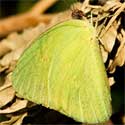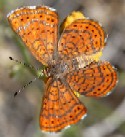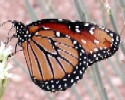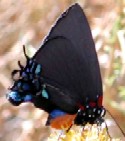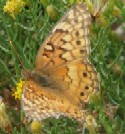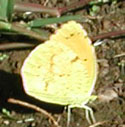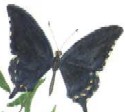Red-whisker Clammy-Weed
Polanisia dodecandra trachysperma
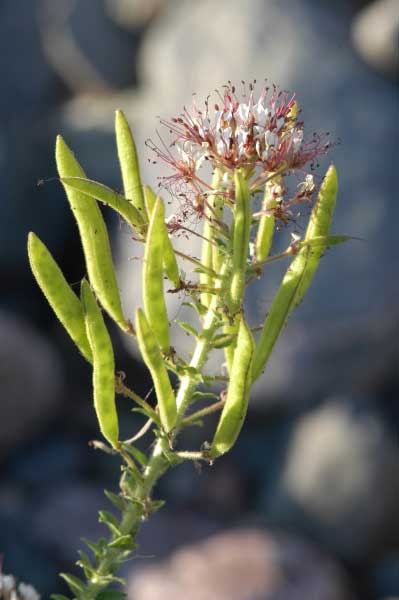
At Mesquite Wash, e. Maricopa Co., Arizona, USA on 24 Sept. 2007, by K. Darrow.
ANNUAL: This hot weather herbaceous plant germinates from seed in late spring,
or more often after monsoon runoff has soaked the sandy washes. Most plants reach one to
1.5 meters tall with one or a very few tall, slender stems.
LEAVES: The leaves and flowering stalks are all covered with sticky hairs and release very pungent aroma.
Lower leaves are trifoliate (three parted). The inflorescence has numerous leafy bracts that are roughly triangular in shape.
FLOWERS: The five white petals are accented by long, conspicuous, red-wine colored stamens. Numerous flowers are clustered
at the terminus of the tall stems and the developing pods just below.
RANGE: Grows in deep sand of washes after they have been flooded by rains. Middle to upper elevations of the Sonoran Desert.
Often common to abundant.
FRUIT: Erect pods also coated with abundant sticky hairs.
UNARMED
By autumn the flowers are among the most attractive to butterflies. During a field trip of the Arizona Native Plant Society to Mesquite Wash northeast of Phoenix, Marceline Vandewater recorded more than ten species visiting the flowers: Cloudless Sulfur, Fatal Metal-mark, Queen, Great Purple Hairstreak, Southern Dogface, Variegated Fritillary, Sleepy Sulfur, Pipevine Swallowtail, Snout Butterfly, Orange Sulfur, Checkered White and Mexican Sulfur.
